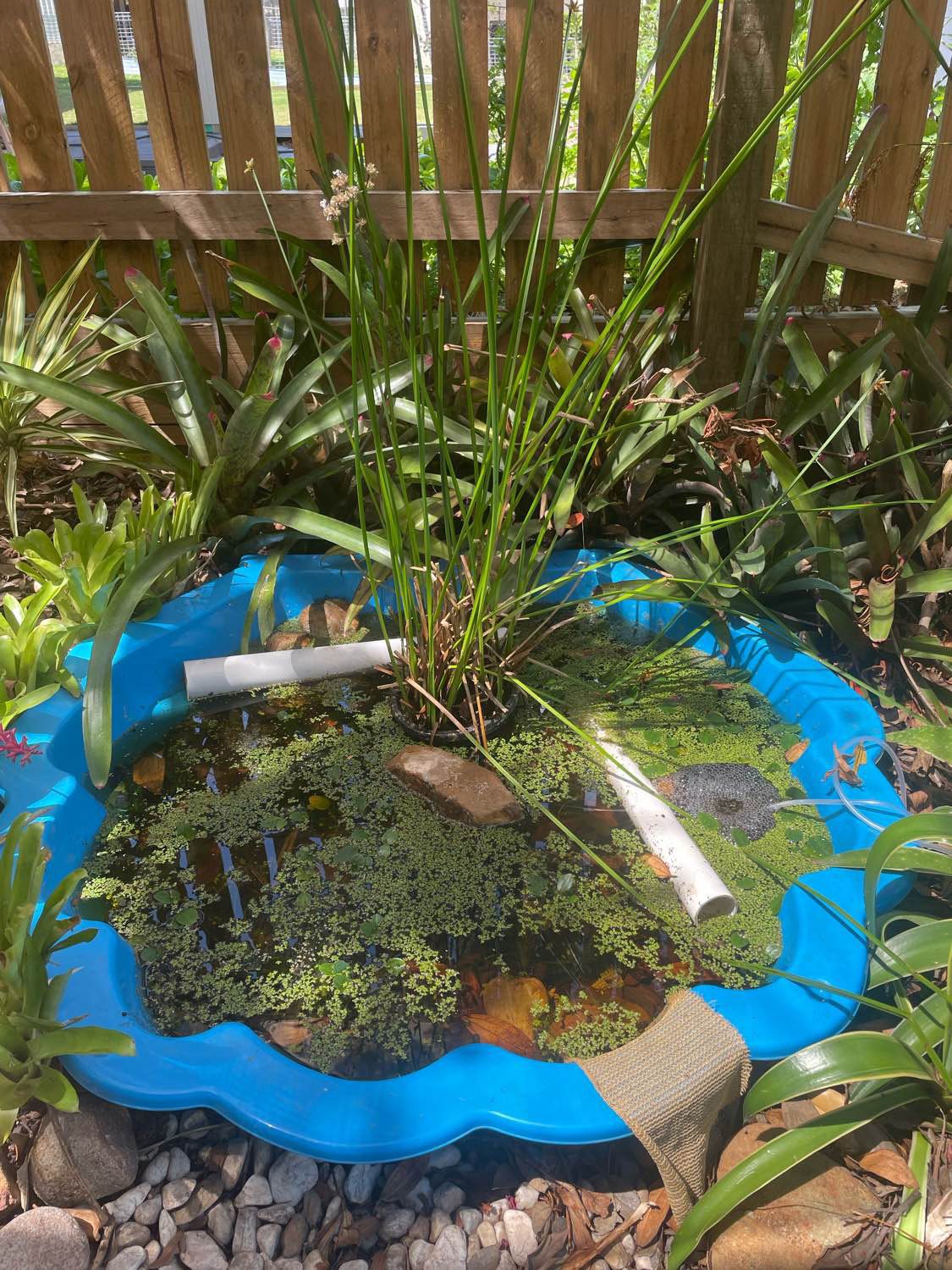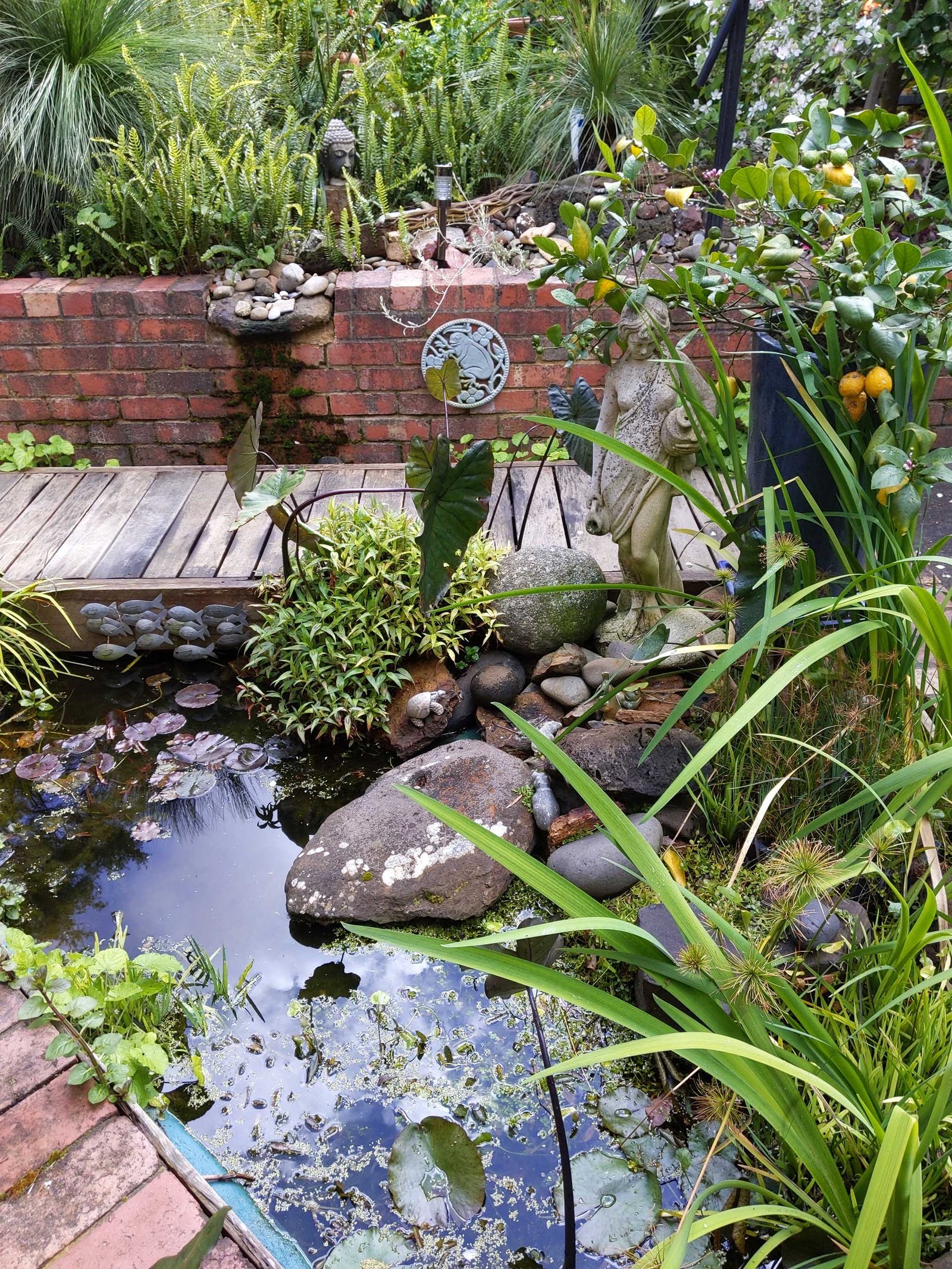Tips and tricks for a frog-friendly backyard
Create a frog-friendly habitat and contribute to frog conservation during FrogID Week!
Every frog call adds to a growing picture of how frogs are doing across the country and how we can better conserve them, starting right at home. With 1 in 5 frog species in Australia threatened with extinction, and increasing pressure from disease, habitat loss, introduced species, pollution, and climate change, they need our help.
The good news? Whether it’s a small backyard garden or a large rural blush block, every space can play a role to help frogs persist. By creating frog-friendly spaces and recording calls during FrogID Week (7–16 November 2025), you’re helping build one of the most powerful frog datasets in the world. This helps scientists and land managers to quickly detect changes over time, like shifts in breeding seasons, species distributions, and habitat health, which would be very difficult to track through traditional scientific methods alone.

© April G
Steps to Creating a Frog-Friendly Habitat
1. To find out which frog species might be living near you, try the “Near Me” filter in the FrogID app. It shows which frogs are potentially in your area, what habitats they prefer, and the time of year they call to attract female frogs. Not all frogs will take up home in your backyard because many species need specific conditions only found in natural areas. However, understanding the frogs potentially living around you guide how you can support their unique habitat needs.
Some frog species, like Australia’s iconic Green Tree Frog, prefer to breed in temporary flooded areas, not permanent water bodies. Many frog species thrive in ‘messy’ habitats (such as moist leaf litter, logs and vegetation) that people often clear away. Even though some frogs need very specific natural conditions, many species, including threatened ones like the Green and Golden Bell Frog, can and do live in backyards if the habitat is suitable. You can provide habitat for many of your local frogs, with some species happily taking up good backyard real estate when the conditions are right.

© Gregory P
2. Establish a water source – frogs need water to breed and to keep their skin moist and healthy. A shallow dish, pond, frog bog, or even a temporary flooded ditch can attract frogs, especially if it includes rocks, logs and vegetation for shelter. Surround the water with native vegetation that can withstand Australia’s increasingly extreme weather, from droughts to floods. Plants like sedges, grasses, and shrubs offer shade and shelter, and support insects that frogs and other wildlife feed on. If adding fish to a pond, native fish are much more friendly to frog eggs and tadpoles than introduced fish. Importantly, make sure fish cannot escape into natural waterways, where they can impact local ecosystems.
3. Avoid using chemicals in your garden. Frogs drink and breathe through their skin, making them especially vulnerable to pesticides, herbicides, and fertilisers. Reducing chemical use where possible is one of the important things you can do to support frogs. Our Create Frog Habitat Guide is a great place to start, whether you have a backyard, balcony, or bush block.
If we make space for frogs, we can help them persist in human-modified environments. That includes farms, bushland edges, and even roadside vegetation – anywhere we can preserve pristine habitat, protect existing frog-friendly habitat, and provide new ones.
Why FrogID Week Matters
FrogID Week, hosted by the Australian Museum, is Australia’s biggest frog count. Each year, thousands of frog calls are recorded through the free FrogID app, building a powerful national database that helps track frog populations and environmental health over time.
Why Frogs?
Supporting frogs has flow-on effects for the whole ecosystem. Tadpoles help keep our waterways clean, frogs are food for many native animals, and their sensitive skin makes them excellent bioindicators of environmental health. By helping frogs, we’re helping nature thrive.
This FrogID Week (7–16 November), we’re asking you to consider supporting frogs by creating frog-friendly habitat and listening for frog calls in your backyard, farm dam, local park, or even on your balcony. Use the free FrogID app to record their calls and contribute to Australia’s biggest frog count, now in its eighth year! This year-on-year data helps scientists track frog populations and understand how they’re responding to environmental change. Every call counts!
Nadiah Roslan, FrogID Project Coordinator, Australian Museum Research Institute.
More information:
- FrogID guide: Create frog habitat https://bit.ly/create-frog-habitat-frogid
- FrogID research blog 04 May 2021: Which frogs are best equipped to survive the human world? https://australian.museum/blog/amri-news/which-frogs-are-best-equipped-to-survive-the-human-world/
- FrogID research news blog 24 May 2021: It’s hard to live in the city: the decline of frog species from our urban areas https://australian.museum/blog/amri-news/its-hard-to-live-in-the-city-the-decline-of-frog-species-from-our-urban-areas/













